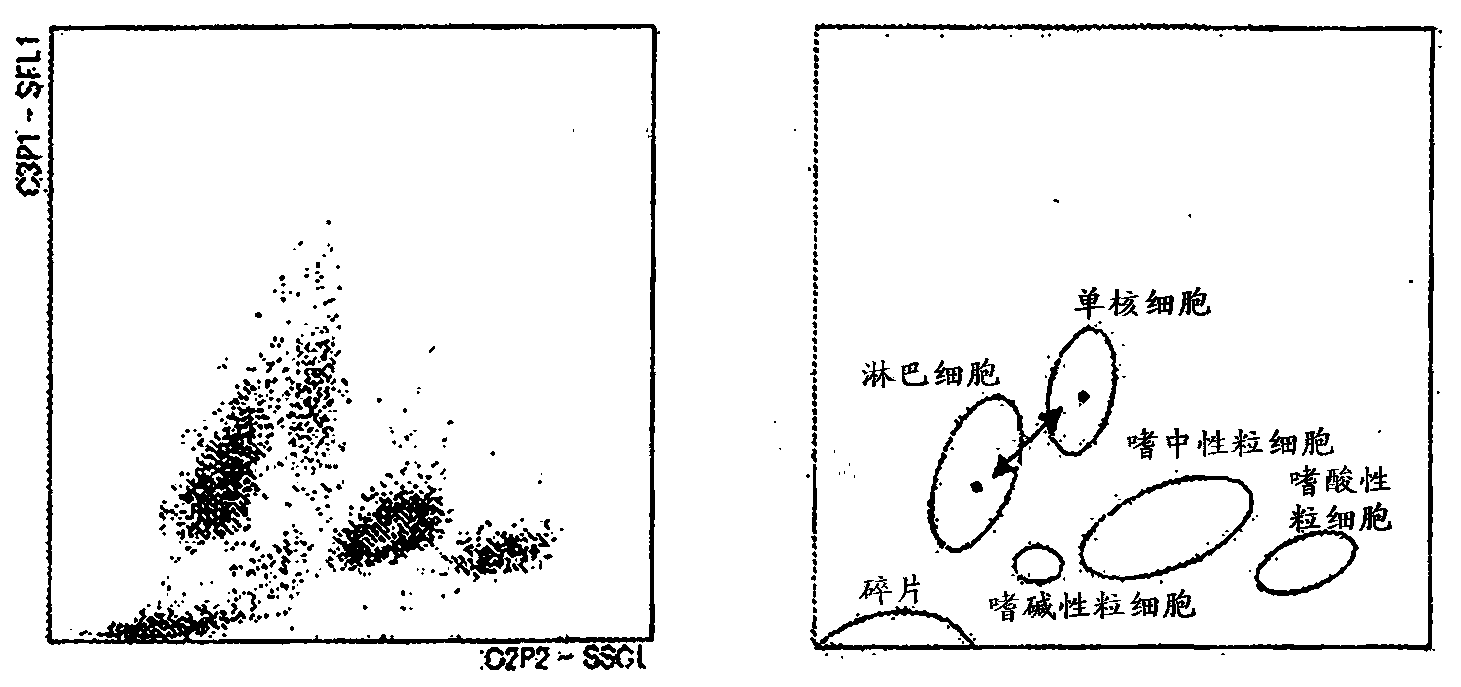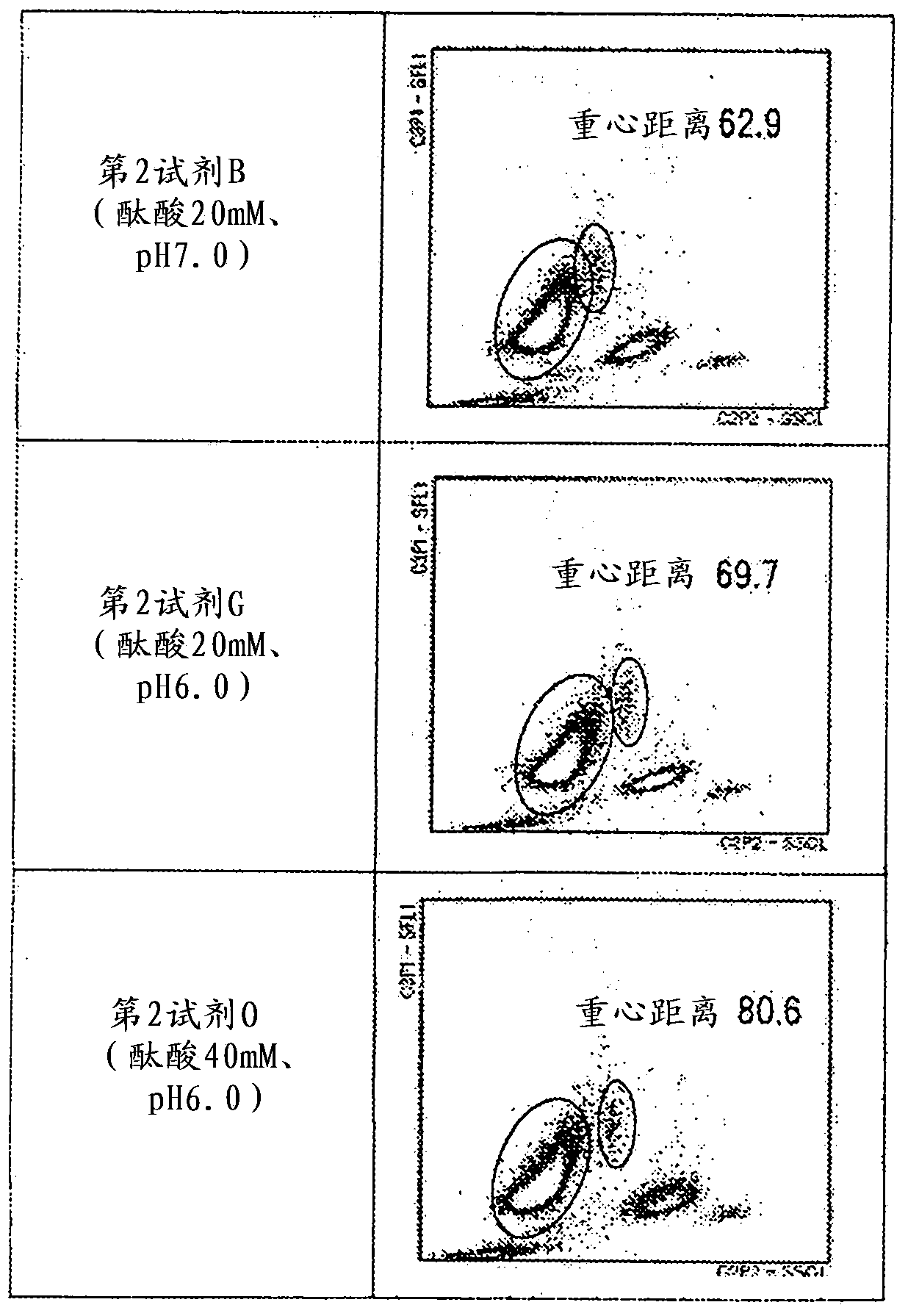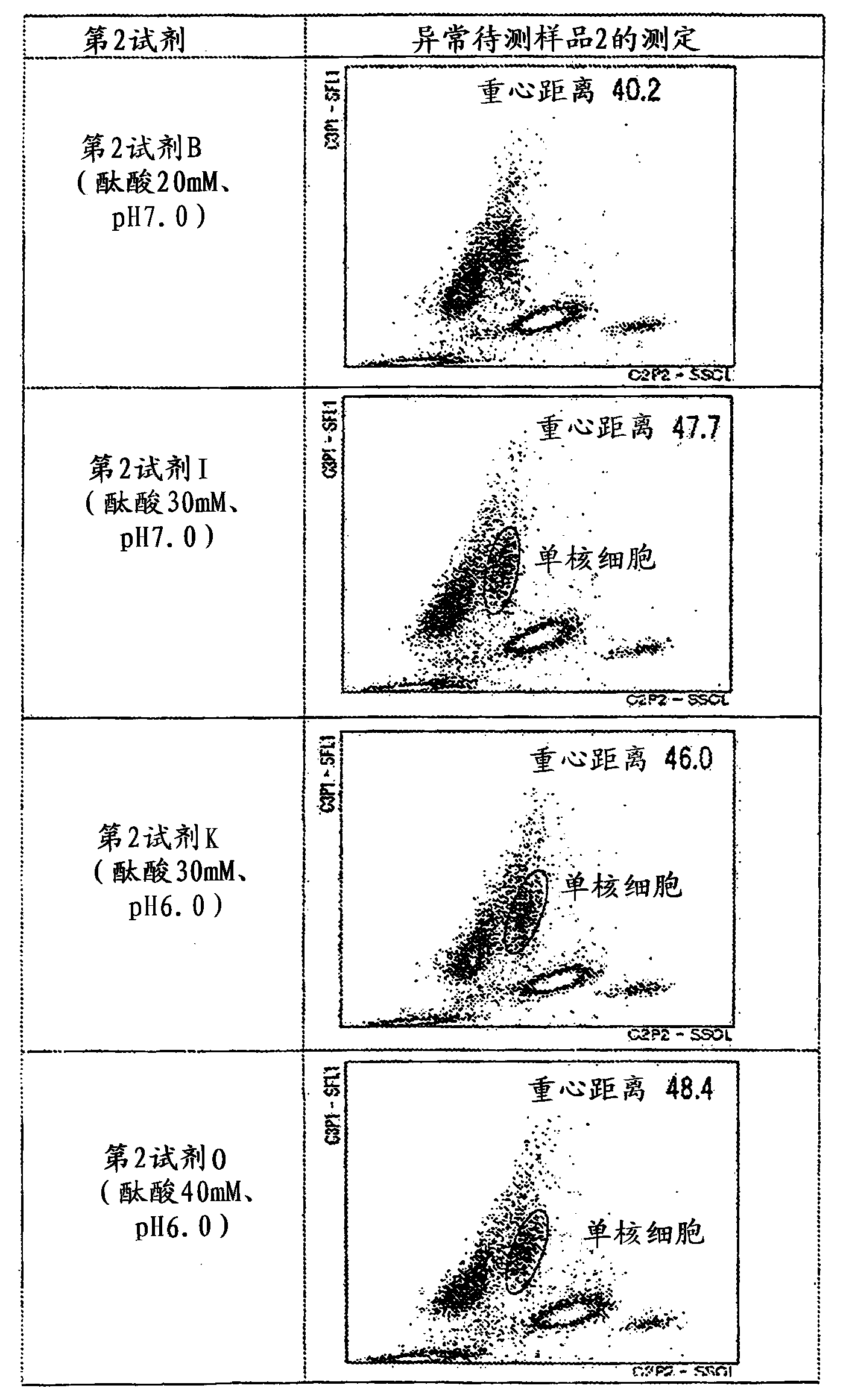Method for classifying/counting leukocytes, reagent kit for classifying leukocytes, and reagent for classifying leukocytes
A technology for counting and counting leukocytes, applied in biochemical equipment and methods, analytical materials, biological testing, etc., can solve the problems of increase and decrease of blood cell count
- Summary
- Abstract
- Description
- Claims
- Application Information
AI Technical Summary
Problems solved by technology
Method used
Image
Examples
Embodiment approach
[0035] In the embodiment of the present invention, the biological sample is not particularly limited as long as it is a body fluid sample containing leukocytes. Examples of living body samples include blood, bone marrow fluid, urine, and blood component transfusions collected from mammals, preferably humans, and the like. In addition, the biological sample may be a sample that may contain abnormal leukocytes. In the present invention, leukocytes include normal leukocytes and abnormal leukocytes. Normal white blood cells are usually classified into 4 types of lymphocytes, monocytes, eosinophils, and granulocytes other than eosinophils, or are classified into lymphocytes, monocytes, and neutrophils Five types of cells, eosinophils, and, basophils.
[0036] In this specification, abnormal leukocytes generally refer to leukocytes that do not exist in peripheral blood. Examples of such abnormal leukocytes include atypical lymphocytes and blast cells. The atypical lymphocyte ref...
Embodiment 1
[0103] In this example, the concentration of the aromatic organic acid in the second reagent and the second reagent pH.
[0104] As the first reagent, Stromatolyser 4DS (Sysmex Corporation) was used. Dodecyltrimethylammonium chloride (LTAC: Tokyo Chemical Industry Co., Ltd.), polyoxyethylene (30) cetyl ether (BC30TX: Nikko Chemicals Co., Ltd.), potassium hydrogen phthalate (hereinafter referred to as phthalate Acid: Wako Pure Chemical Industries, Ltd.) and EDTA-2K (Chubu Chelest Co., Ltd.) were mixed to have the composition shown in Table 1 below to prepare a second reagent. In addition, NaOH solution was used for pH adjustment.
[0105] In addition, LTAC is a cationic surfactant, BC30TX is a nonionic surfactant, and phthalic acid is an aromatic organic acid.
[0106] 【Table 1】
[0107]
[0108] As shown in Table 1, only the second reagents A and B contained HEPES (Dojin Chemical Laboratory Co., Ltd.) as a buffer solution. The second reagents A and B correspond to the ...
Embodiment 2
[0122] In this example, using the first reagent of Example 1 and the second reagent B, G, or O, a blood test sample containing abnormally morphological lymphocytes (hereinafter referred to as abnormal test sample 1) was measured. In addition, the measurement by FCM and the calculation of the center-of-gravity distance were performed similarly to Example 1.
[0123] A scattergram (X-axis: side-scattered light intensity, Y-axis: fluorescence intensity) created from the measurement of FCM using each reagent is shown in figure 2 .
[0124] The center-of-gravity distance when the abnormal test sample 1 was measured using the second reagent B (phthalic acid concentration: 20 mM, pH 7.0) was 62.9. The center-of-gravity distance when the abnormal test sample 1 was measured using the second reagent G (phthalic acid concentration 20 mM, pH 6.0) was 69.7. The center-of-gravity distance when the abnormal test sample 1 was measured using the second reagent O (phthalic acid concentration...
PUM
 Login to View More
Login to View More Abstract
Description
Claims
Application Information
 Login to View More
Login to View More - R&D
- Intellectual Property
- Life Sciences
- Materials
- Tech Scout
- Unparalleled Data Quality
- Higher Quality Content
- 60% Fewer Hallucinations
Browse by: Latest US Patents, China's latest patents, Technical Efficacy Thesaurus, Application Domain, Technology Topic, Popular Technical Reports.
© 2025 PatSnap. All rights reserved.Legal|Privacy policy|Modern Slavery Act Transparency Statement|Sitemap|About US| Contact US: help@patsnap.com



